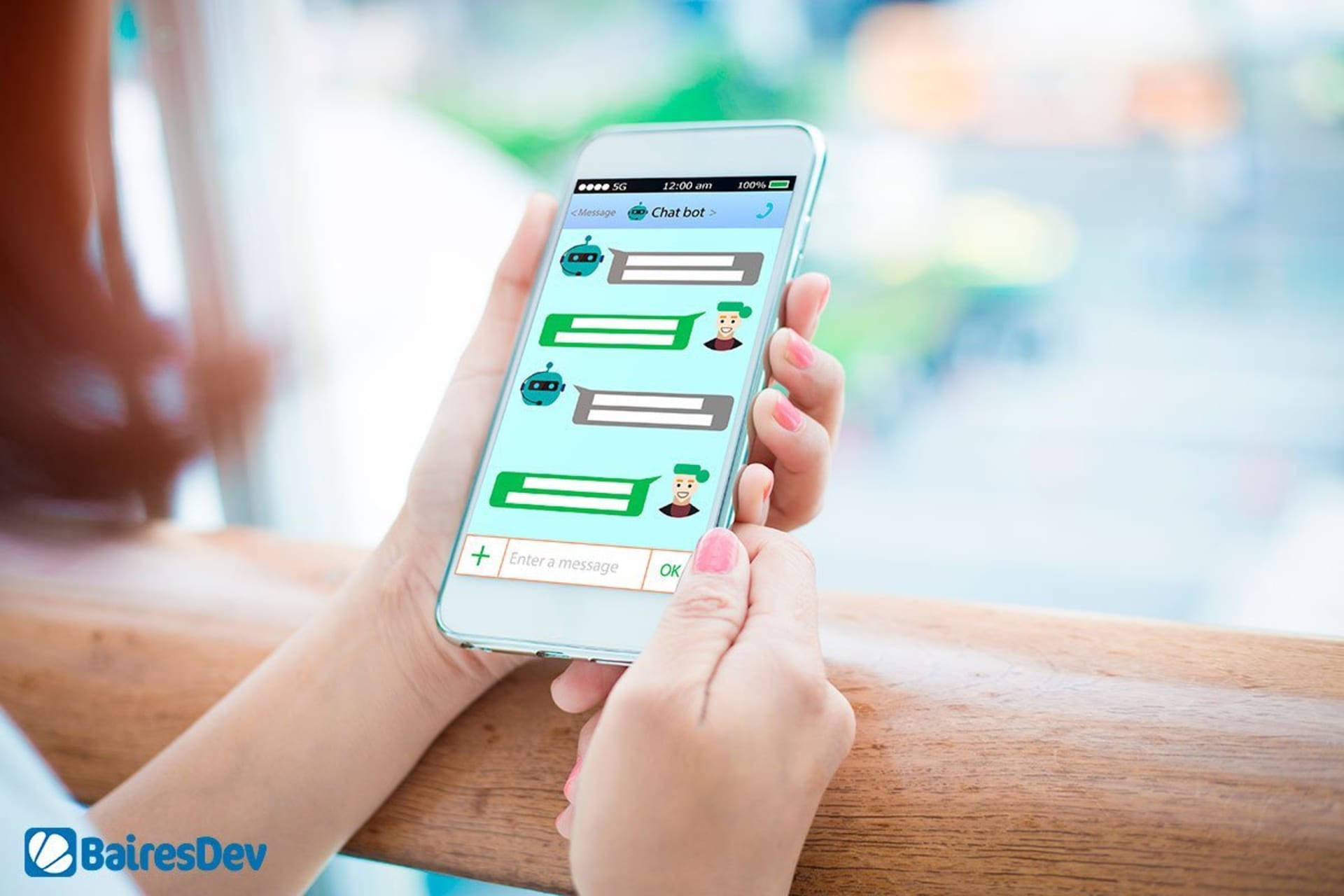The Rise of Chatbots
Chatbots are incredibly popular, especially among businesses seeking better customer experience. Chatbots are now relevant in most major industries. Advancements in their accuracy, usability, and affordability make them more useful for companies than ever before. Studies suggest that chatbots will be involved in 85% of all types of business-customer interaction by 2020, and the global chatbot market will reach $1.23B by 2025. With the sector expecting such prolific growth, many businesses are seeking to outsource their development services, and the market to do so is competitive.
Chatbot Uses
Chatbots are available all day, every day, without the need for breaks, vacations, sick days or anything else their human counterparts require. They are also much better at performing repetitive tasks which would otherwise require a paid employee. This, together with their reliability and accuracy, makes them ideal for handling online customer interactions. And in today’s market, this means messaging apps.
By 2019, more than 25% of the world’s population will be using mobile messaging apps. Chatbots are increasingly used in this area, rather than through websites or phone services, and it’s not hard to see why. Consumers rely on Live Chat to interact with many businesses, but currently, 21% of live chat conversations go unanswered. Those calls that employees do answer have a typical wait time of over three minutes. In an era of expected instant gratification, this drives away customers. Chatbots solve this problem by providing scalable, immediate, and reliable customer service for use in any medium, but particularly messaging apps.
Outsourcing Development Services
As so many businesses now deploy or are planning to deploy chatbots, the software outsourcing market for chatbot development is blossoming. Outsourcing is popular for a few fundamental reasons:
- Saves time in development
- Provides access to advanced technology and a core team of skilled experts
- Requires no extra resources from the company
- Less risk overall to the company
Chatbot development services are provided by third party companies who offer the advanced programming and structured maintenance required. Choosing the right software outsourcing company, though, is no simple task. Any business looking to hire a team for their chatbot needs should consider:
- What are the required capabilities of the bot?
- What’s the budget?
- What are the technical capabilities of current staff?
With the answers to these three questions, any business can narrow down the outsourcing market to just those providing applicable services.
Outsourcing Technical Aspects of Chatbots
Outsourcing development services for chatbots need not be a one-size-fits-all solution. Individual aspects of chatbot development can be outsourced, depending on a business’ needs and abilities. Below, we break down some of the major technical possibilities for chatbot development.
Natural Language Toolkit
What?
The Natural Language Toolkit (NLTK) is a suite of programs and libraries for symbolic and statistical natural language processing (NLP). It’s written in English, for Python. NLTK includes graphical demonstrations and sample data and is accompanied by a book that explains the underlying concepts behind the language processing tasks supported by the toolkit.
Who?
There are many Python-based chatbot providers, including IBM Watson Conversation Service, rasa NLU, Microsoft’s LUIS, Pandorabots, and ChatterBot.
Why?
Python is an incredibly versatile tool. It is also one of the easier languages for a beginner to learn, thanks to its consistent syntax and human-like language patterns. These characteristics ensured that when Python was first released, it was applied to a diverse array of cases, while simultaneously expanding its range in scientific computing. This resulted in the creation of a wide range of open-source libraries that have benefited from years of development.
Developers wrote the progenitor of NLP integration in Python, and NLTK’s release in 2001, five years ahead of its nearest competitor, ensured its foothold as a wide-ranging resource to help chatbots utilize the best functions of NLP.
Python Development Outsourcing
Outsourcing Python-based chatbot development can save a business crucial time and money. There are three stages of chatbot development: implementation, integration, and administration. A software outsourcing company would take around 14 weeks to complete these three steps, and this is based on a 40 hour week for their developers. The costs are dependent on the type of chatbot, but the range is anywhere from US$25-$100 an hour.
While such a high rate for three and a half months might sound like a lot, this is far less in comparison to paying a developer’s full-time salary to work in-house. And the cost is not the only factor here; finding skilled AI developers is a huge challenge.
JavaScript
What?
Another option for chatbot development, JavaScript (JS) is a high-level interpreted programming language. JavaScript is dynamic, weakly typed, prototype-based, and multi-paradigm.
Who?
The second most popular language after Python for bot development, multiple providers offer JS-based (or partly JS-based) solutions. Among these are Stanford NLP, Apache Open NLP, and Microsoft’s LUIS. Both Stanford’s and Apache’s solutions offer supported chatbot development either through tooling, or when calls originate via APIs.
Why?
JS-proponents rely on it for its simple analyses and quick processing time, and many argue that its capabilities are more than sufficient for simple chatbots. It contains a number of libraries, including ML packages such as Weka. Python development suffers from a lack of clarity, making searching for answers akin to finding a needle in a haystack, whereas JS has an enormous volume of documentation to support it.
As a long-established language, JS has a wealth of information and clear examples available. Ambiguity in a programming language is not beneficial to ensuring chatbot accuracy, and JS helps resolve this issue. However, Weka struggles in comparison to Python in terms of the level of support and versatility.
Outsourcing JavaScript
In addition to the time and financial constraints of building an effective chatbot, complexity is an additional reason for outsourcing JS chatbot development. JS cannot be easily learned on the job by a non-technical person, and finding qualified developers is tough. This makes outsourcing often the only reasonable choice.
AI Trends in Chatbots
NLP developments mean that machines can understand human language as it is spoken or typed, and NLP is one of the main components of artificial intelligence (AI). Consider how complex programming instructions need to be, and how imprecise human language often is. Humans rely on their ability to interpret meaning from context, as well as to understand local variations, accents, slang, and dialect.
Although NLP is still far from perfect, ML algorithms ensure we are moving ever-closer to a point where it will be impossible to tell whether we are talking to a human or a computer. These algorithms monitor and draw insight from every conversation, learning how to be better the next time around. This adaptive capability is what’s driving chatbots forward, so they too can learn from context and experience. So while it is possible to build a chatbot without using AI, all good chatbots rely on it.
Advantages of Conversational AI
There are many advantages to using conversational AI:
- Cross-platform integration
- Better engagement with users
- Better user experience and decision support
- Increased user attention
Outsourcing AI
The potential corporate market for AI services, software, and hardware is staggering. Forecasts put it at $57.6 billion by 2021. But incorporating AI into an existing business can be challenging, especially for large companies with cumbersome legacy systems. Outsourcing offers a few key benefits that companies cannot ignore when considering a move into this field.
- Access to Talent
Outsourcing provides access to global talent pools. AI data scientists command seven-figure salaries and are in high demand. Outsourcing gives the ability to tap into expert’s skill sets without costly outlays or time spent in hiring. Outsourcing firms help businesses choose the appropriate technology for their organization more efficiently. And thanks to their expertise, tried-and-tested models are quicker to implement when compared to crafting them internally.
- Lower Risk
Planning AI projects without previous experience can result in costly mistakes. External providers draw on experience to identify the right approach for each business. If an outsourced AI solution does not quite work, the cost and risk burden is markedly less than the in-house alternative. And, if a project isn’t delivering at all, the organization can walk away from an external data company whenever they need to.
- Lower Costs
Trying to replicate the scale of data and past knowledge in this field is a huge cost-inefficiency, if even possible. Outsourcing may be the only way to access cost-effective expertise in AI.
Outsourcing Non-Technical Aspects of Chatbots
Aside from the technical aspects, companies can also outsource other aspects of chatbot development. Chatbot copy is the language through which your chatbot speaks, and businesses have the opportunity to personify their brand with clever copy. Speech patterns, what words they use, and how they respond to a request – in essence, the personality of the bot – can be written by professionals and tailored to match a brand’s core message. Outsourcing chatbot copy is key to maintaining this unique voice while also addressing fundamental functionality.
A Focus on Customer Support Trends
89% of users prefer information discovery through bots to information discovery via websites. Customer support is the number one area for chatbots to thrive in, and this comes in several forms:
Call Centers
Unlike people, chatbots can scale on demand to handle any level of call volume. No call volume is too large, and as such, chatbots will eliminate wait times for consumers.
Personalization
On traditional e-commerce websites, buyers can select products, but they get little or no advice. However, with chatbots, sites can advise consumers and help identify suitable products as they shop. This increases overall sales as well as customer satisfaction.
Accuracy & Timeliness
Chatbots contain all of the information they need, so there are no concerns of the accuracy of the information, waiting for a human customer service representative to find the relevant information or inability to find relevant information. Chatbots meet customer’s needs more swiftly and reliably than ever before.
A High Potential Technology
There can be no doubt that chatbots are revolutionizing the way businesses interact with their customers (and, to some extent, each other). As with any new or emerging technology that threatens jobs, there is some concern that the rise of chatbots will mean the demise of traditional roles, especially in sales, customer service, and customer support. One study estimates that AI will impact 25% of all jobs by 2019.
But there is hope for humans. As menial and repetitive tasks become automated, more creative roles become necessary. This is especially true for those with well-developed ‘soft’ skills such as leadership, teamwork, and flexibility. For those willing to adapt, a future with more interesting and rewarding roles is not too far away.
Businesses will need to adapt as well, as chatbots and the use of AI in all aspects of life increase. Those slow to develop their technological capabilities, or unwilling to change the way they interact with customers, will suffer the consequences of falling behind the times. Consumers veer towards the easiest, most user-friendly interface, and that now means well-executed chatbots. Companies failing to deliver the same immediate, accurate and personal service as their rivals will not last long.







